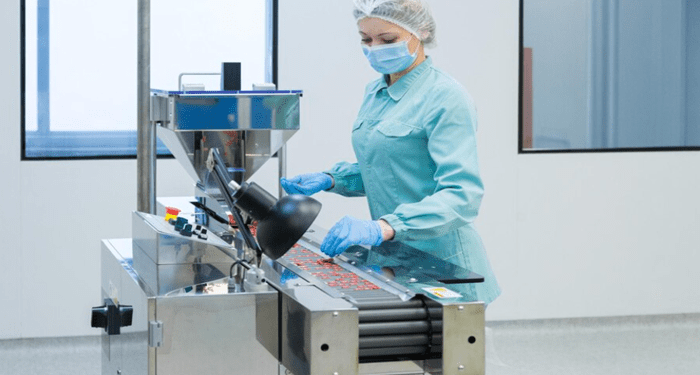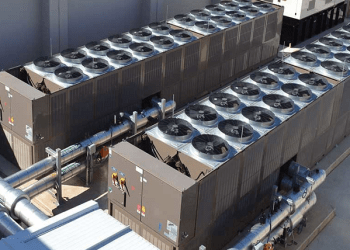Key Takeaways:
- Medical plastic injection molding allows for the production of intricate and complex plastic components with precision and efficiency.
- Selection of appropriate materials is crucial in medical plastic injection molding, with medical-grade plastics meeting stringent requirements for biocompatibility, chemical resistance, and mechanical properties.
- Temperature and pressure control are critical in achieving consistent and high-quality plastic parts.
- Innovations in injection molding techniques, such as multi-shot and micro-injection molding, enhance precision and quality.
- Design and engineering optimization, robust quality control measures, and consistency in production are essential factors in achieving precision and quality in medical plastic injection molding.
- Medical plastic injection molding is used in surgical instruments, medical device manufacturing, and the production of customized plastic components.
- Future trends and innovations include the use of 3D printing, sustainability efforts, and advancements in bio-compatible materials.
1. The Science Behind Medical Plastic Injection Molding
In the field of medical device manufacturing, precision and quality are of utmost importance. Medical plastic injection molding is a technique that allows for the production of intricate and complex plastic components with precision and efficiency. This process involves injecting molten plastic into a mold cavity, which then solidifies and takes the shape of the mold.
Understanding the Materials
One of the key factors in medical plastic injection molding company is the selection of the appropriate materials. Medical-grade plastics must meet stringent requirements in terms of biocompatibility, chemical resistance, and mechanical properties. Common materials used in medical injection molding include polyethylene, polypropylene, polycarbonate, and polyurethane.
These materials are chosen for their ability to withstand the harsh conditions of healthcare environments, such as sterilization processes and exposure to various chemicals. They are also compatible with the human body and do not cause adverse reactions or leach harmful substances.
The Importance of Temperature and Pressure
Temperature and pressure control are critical in achieving consistent and high-quality plastic parts in medical injection molding. The molten plastic must be heated to a specific temperature to ensure proper flow and filling of the mold cavity. This temperature is carefully monitored and controlled throughout the injection molding process.
Additionally, the injection pressure must be accurately set to ensure that the molten plastic completely fills the mold cavity and forms the desired shape. Too low of a pressure can result in incomplete filling, while too high of a pressure can lead to overpacking and potential part defects.
Innovations in Injection Molding Techniques
Continuous advancements in technology have led to innovations in injection molding techniques, further enhancing precision and quality in medical plastic injection molding.
One such technique is the use of multi-shot or multi-material injection molding. This technique allows for the simultaneous injection of multiple materials or colors, eliminating the need for additional assembly steps and improving overall efficiency. It enables the production of complex parts with different properties or functions in a single molding cycle.
Another innovation is the development of micro-injection molding. This technique involves the production of extremely small and intricate plastic parts, typically with dimensions on the scale of micrometers. Micro-injection molding opens up new possibilities in medical device manufacturing, where miniaturization is often required for devices such as microfluidic chips and implantable medical devices.
2. Ensuring Precision and Quality in Medical Plastic Injection Molding
When it comes to medical device manufacturing, precision and quality are non-negotiable. Any defects or variations in the plastic components can have serious implications for patient safety. To ensure precision and quality in medical plastic injection molding, several factors must be carefully considered and addressed.
The Role of Design and Engineering
The design and engineering of the plastic components play a crucial role in achieving precision and quality in medical injection molding. Close collaboration between design engineers, mold makers, and injection molding professionals is necessary to optimize the design for manufacturability.
Design features such as wall thickness, gate location, and parting lines can significantly impact the mold filling, cooling, and ejection processes. By utilizing advanced design software and techniques like mold flow analysis, potential design issues can be identified and resolved before production, ensuring a smooth manufacturing process and high-quality end products.
The Importance of Quality Control Measures
Implementing robust quality control measures is essential to ensure that every plastic component meets the required specifications and standards. Quality control starts from the inspection of incoming raw materials to the final inspection of finished parts.
This includes rigorous testing for dimensional accuracy, surface finish, and mechanical properties. Various techniques such as coordinate measuring machines (CMM), optical measuring systems, and tensile testing are utilized to verify the quality and consistency of the plastic parts.
In addition to product inspection, process monitoring and statistical process control (SPC) techniques are employed to identify and address any variations or anomalies during the injection molding process. This allows for immediate corrective actions, minimizing the risk of producing defective parts.
Creating Consistency in Production
In medical plastic injection molding, consistency is key. The goal is to produce plastic components with consistent quality, dimensions, and properties, regardless of batch size or production volume.
To achieve this, process optimization and validation techniques are employed. This includes conducting process capability studies, setting up control limits, and utilizing advanced process monitoring systems. All process parameters, such as temperature, pressure, cooling time, and cycle time, are carefully controlled and monitored to ensure reproducibility and consistency.
Furthermore, implementing automation and robotics in the manufacturing process can help eliminate human errors and improve overall consistency. Automated systems can precisely control the injection molding process and ensure that each part is manufactured with the same level of accuracy and quality.
3. Applications of Medical Plastic Injection Molding in the Healthcare Industry
Medical plastic injection molding has revolutionized the healthcare industry by enabling the production of high-quality, cost-effective, and customized plastic components for a wide range of applications.
Producing Surgical Instruments with Precision
Medical plastic injection molding is widely used in the production of surgical instruments. These instruments require high precision, durability, and biocompatibility.
With injection molding, complex surgical instruments, such as forceps, retractors, and clamps, can be manufactured with intricate designs and features. The use of medical-grade plastics ensures that these instruments can withstand repeated sterilization processes and maintain their functionality over time.
Innovations in Medical Device Manufacturing
Medical plastic injection molding has played a significant role in driving innovations in medical device manufacturing. The ability to produce complex and miniaturized components has opened up new possibilities in the development of advanced medical devices.
One example is the production of microfluidic devices used for diagnostic testing and drug delivery. These devices require precise channels and chambers to control the flow of fluids. Injection molding allows for the mass production of these microfluidic devices with high accuracy and consistency.
Another innovation is the development of implantable medical devices, such as pacemakers and orthopedic implants. Injection molding enables the production of custom-designed components that seamlessly integrate with the patient’s anatomy, providing better functionality and comfort.
Improving Patient Care with Customized Plastic Components
Customization is becoming increasingly important in healthcare to meet the unique needs of individual patients. Medical plastic injection molding allows for the production of customized plastic components, such as prosthetics, braces, and orthotics.
By utilizing 3D printing technology alongside injection molding, complex and personalized devices can be created, tailored to the specific requirements of each patient. This not only improves patient comfort and functionality but also enhances overall treatment outcomes.
4. Future Trends and Innovations in Medical Plastic Injection Molding
The field of medical plastic injection molding continues to evolve, driven by advancements in technology and the growing demand for safer and more effective medical devices. Several future trends and innovations are poised to shape the future of this industry.
3D Printing in Medical Device Production
3D printing, also known as additive manufacturing, is an emerging technology that holds great promise in medical device production. This technology allows for the direct production of complex 3D structures without the need for traditional molds.
By combining the benefits of 3D printing with injection molding, manufacturers can achieve greater design flexibility, reduced lead times, and cost-effective production. Customized medical devices with intricate geometries can be manufactured with improved speed and efficiency.
Embracing Sustainability in Plastic Injection Molding
As the world becomes increasingly aware of the environmental impact of plastic waste, the healthcare industry is also seeking more sustainable solutions in plastic injection molding.
Efforts are being made to develop bio-based and biodegradable materials that can be used in medical injection molding. These materials aim to reduce the reliance on fossil fuels and minimize the carbon footprint associated with plastic production.
In addition, recycling and waste management strategies are being implemented to ensure responsible disposal and reuse of plastic materials. This includes the recycling of medical plastic waste generated during the injection molding process and the use of recycled plastics in subsequent production cycles.
Advancements in Bio-Compatible Materials
The development of bio-compatible materials is a key focus in medical plastic injection molding. These materials are designed to maintain their properties and biocompatibility when in contact with living tissues or fluids.
Ongoing research is focused on improving the bioactivity and integration of medical plastic components with the human body. This includes the incorporation of functional additives, such as antibacterial agents or drug-delivery systems, within the plastic matrix.
Advancements in bio-compatible materials will open up new possibilities in medical device manufacturing, enabling the development of innovative devices that provide enhanced functionality and improved patient outcomes.
In conclusion, medical plastic injection molding is a science that requires precision, quality, and innovation. Through careful material selection, temperature and pressure control, and advancements in injection molding techniques, the production of intricate and high-quality plastic components for the healthcare industry has become a reality. Ensuring precision and quality involves the collaboration of design and engineering teams, implementation of robust quality control measures, and creating consistency in production. The applications of medical plastic injection molding are vast, ranging from surgical instruments to innovative medical devices and customized components. Looking towards the future, 3D printing, sustainability, and advancements in bio-compatible materials will continue to drive the evolution of this field. The art of medical plastic injection molding is paving the way for safer, more effective, and personalized healthcare solutions.
FAQ
Question: What is medical plastic injection molding? – Medical plastic injection molding is a technique that allows for the production of intricate and complex plastic components with precision and efficiency. It involves injecting molten plastic into a mold cavity, which then solidifies and takes the shape of the mold.
Question: What are medical-grade plastics? – Medical-grade plastics are materials that meet stringent requirements for biocompatibility, chemical resistance, and mechanical properties. They are chosen for their ability to withstand harsh healthcare environments, such as sterilization processes and exposure to various chemicals, without causing adverse reactions or leaching harmful substances.
Question: How are temperature and pressure controlled in medical plastic injection molding? – Temperature and pressure control are critical in achieving consistent and high-quality plastic parts. The molten plastic is heated to a specific temperature to ensure proper flow and filling of the mold cavity, while the injection pressure is set to ensure complete filling without overpacking or incomplete filling.
Question: What innovations have been made in injection molding techniques? – Continuous advancements have led to the development of multi-shot or multi-material injection molding, which allows for the simultaneous injection of multiple materials or colors. Micro-injection molding has also been developed to produce extremely small and intricate plastic parts on a micrometer scale.
Question: How can precision and quality be ensured in medical plastic injection molding? – Precision and quality can be ensured through the optimization of design and engineering, robust quality control measures, and consistency in production. Collaboration between design engineers, mold makers, and injection molding professionals is necessary, and quality control includes rigorous testing and process monitoring.
Question: What are the applications of medical plastic injection molding in the healthcare industry? – Medical plastic injection molding is used in the production of surgical instruments, medical device manufacturing, and the production of customized plastic components such as prosthetics, braces, and orthotics.
Question: What are the future trends and innovations in medical plastic injection molding? – The future trends include the use of 3D printing in medical device production, sustainability efforts in plastic injection molding, and advancements in bio-compatible materials for enhanced functionality and improved patient outcomes.
Question: What is the significance of 3D printing in medical device production? – 3D printing allows for greater design flexibility, reduced lead times, and cost-effective production of complex 3D structures without traditional molds. When combined with injection molding, it enables the efficient production of customized medical devices with intricate geometries.








